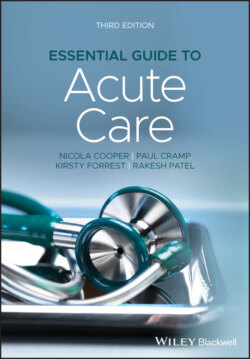Читать книгу Essential Guide to Acute Care - Nicola Cooper - Страница 25
Communication and the Critically Ill
ОглавлениеIn recent years, healthcare has increasingly focussed on systems and processes that improve patient safety. One important facet of patient safety is ‘human factors’ – how people interact with each other and technology. Good communication, teamwork, and situation awareness can be as important in successfully managing an acutely ill patient as having good medical knowledge and skills.
A new doctor once asked his senior how to treat a patient who had had too much β‐blocker. The senior was half listening, writing in some notes. Another senior was nearby and asked, ‘What do you mean – what is the pulse and blood pressure?’ The new doctor replied, ‘Pulse 30, blood pressure unrecordable’. Both seniors dashed to the patient’s bedside. Good communication is important. SBARR is a simple system to follow when communicating about a seriously ill patient with colleagues, particularly over the phone. It is illustrated in Box 1.4.
Clearly communicating the patient’s current vital signs and key test results is the only way to give the listener a sense of how urgent the situation is. Your colleague may have heard all he needs to know and be on his way, or he may want to go through some more details first. Either way, it is important to communicate clearly what help is required, particularly if you want your colleague to come and see the patient. The senior resident doctor should always be informed about any seriously ill patient, whether or not his expertise is required.
The following chapters describe the theory behind the assessment and management of acutely ill adults. They are intended as a foundation on which experience and practical training can be built. Understanding and practising the basics well is the essence of good acute care. Good acute care can even be summed up as ‘the right oxygen, the right fluid and the right help at the right time’. Hopefully by the end of this book, you will have a better idea of what this means and have a better understanding of the significance of common clinical findings. These simple things can make a big difference to your patients.
